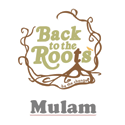A Science and an Astrological Event beyond Colours (Holi)

Holi is an ancient jubilee that dates back to the Vedic period of Indian history. After makar sankranti, as the earth advances along the sun’s route and the phalguna purnima or full moon occurs, it marks the end of downtime and the onset of the spring season. After this purnima commences the Hindu timetable with its first month chaitra. It starts when the moon fully turns full. It’s an astronomical event when the downtime flings farewell and the summer sets in. As the vernal equinox approaches, Holi is celebrated. Firstly, during the Vedic age, Holi wasn’t celebrated the way it was. Fun and frolic were added to the festivity later in the history of the land. In fact, the spirit of the original Holi jubilee was in the ritual of sanctification and purifying the atmosphere to ward off the impending peril of falling sick due to change of season.
Vedic people, thus, study of a ritual which was a remedy for the peril ahead. It was a two- day festivity wherein the rituals espoused by the Vedic men were scientific,eco-friendly, and socially sound. The sportful throwing of natural coloured maquillages on each other had a medical significance. The introductory greasepaint would come from tapioca and sago. The colours were traditionally made of neem and bilva leaves, kumkum and haldi, and with the flowers of palash, also called taysu or the honey of the timber, aparajita and marigold. Powdered and ambrosial red sandalwood, dried hibiscus flowers, and pomegranate were indispensable sources of different tones of red.
Mixing lime with turmeric created an indispensable source of orange. The greasepaint was occasionally combined with mica greasepaint to produce a twinkling effect. Unfortunately, chemically produced artificial colorings and fake abir and gulal maquillages have replaced the natural colours. Medical reports confirm the dangerous goods of similar colours on the mortal body. Holika Dahan is another scientific reason for celebrating Holi. When the Holika or campfire is burned , its temperature rises to about 145 °F, destroying the bacteria present in the atmosphere. Following the Vedic tradition, people are supposed to perform three or seven parikramas or circumambulations around the Holi campfire; this kills the bacteria in the body.
In Holika campfire, earlier only cow soil and timber of certaineco-friendly trees — arrad, redi, mango and palash — were used. The campfire was burned not by matchsticks but by reciting mantras at the exact mahurat when the moon fully turned full, to advertise the inception of chaitra month of the Hindu timetable. Since Holi also marked the morning of the rabi agrarian season, lately gathered grains, dry fruits and withered leaves were used as ahuti or immolations into the Holika campfire. The bank of the cow soil emitting from the campfire wasn’t onlynon-poisonous andeco-friendly, it also killed the bacteria in the air, owing to the high phosphorus content in it. The jubilee of Holi has artistic and social significance too. It’s a jubilee to end and relieve oneself of once crimes and collective conflicts by meeting, chatting and embracing others. therefore, Holi is a jubilee of fellowship and remission, meant to produce harmony in the society while contemporaneously flushing out stagnant downtime negativity.
Incidentally, after three full days after Holi, a minor but veritably significant day, known as basauda, meaning banal food, is observed, particularly in north India. The significance is that after this day, it was banned to consume banal food. It was calculated that bacterial germination in cooked food would start taking place with effect from the day of basauda, owing to rainfall conditions( obviously, no refrigerators were there when this tradition was introduced). The lady of the house would cook gleeful food on the dusk of basauda, and the entire family would consume the same food the coming day. later, banal food wasn’t to be consumed until the onset of the coming downtime. similar old and significant traditions show that the ancient Indian rituals aren’t bare dogmas, but are grounded on pure scientific logic.
Content Specific Keywords: holi festival india, holi festival essay, holi festival in english, holi festival of colors, holi wikipedia, holi festival in hindi, holi story, holi festival, holi festival images, holi festival near me, holi festival drawing, holi festival informationthe story behind the holi festival is related to, about holi festival in english, temple run 2 holi festival, pushkar holi festival, indian holi festival, 10 lines on holi festival in english, holiday festival of lights, holiday food and gift festival, holi indian festival,holi color festival, holiday glow festival, holi is my favourite festival

